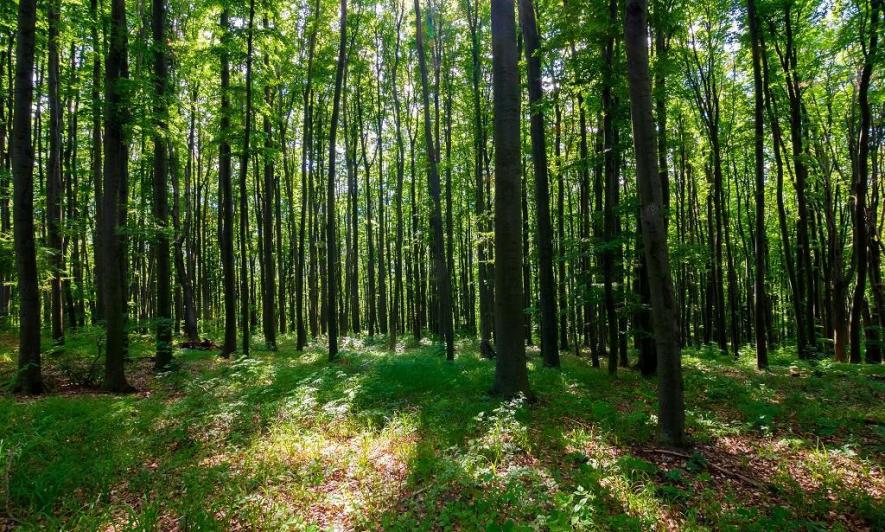Environment: India is Identifying and Defining Forests Wrongly, Say Experts

Image Courtesy: Down To Earth
Nimli (Rajasthan): Amid increasing challenges of climate change, it may surprise many that India is manipulating data to show increasing forest cover and misrepresenting what forest in the real sense should be. Experts have questioned it and raised the issue of how the forest should be defined.
Contrary to the official reports of increasing forest cover in the country, MD Madhusudan, Obaid Siddiqi Chair in the History and Culture of Science at the National Centre for Biological Sciences, Bengaluru, said, "While the India State of Forest Report (ISFR 2021) says forest cover has increased, a study of the Forest Survey of India maps shows otherwise."
While speaking at the Centre for Science and Environment's (CSE) four-day national conclave, the Anil Agarwal Dialogue 2022, Madhusudan said this was a question of erroneous identification, categorisation and definition.
"Tea estates, coconut plantations and housing colonies in cities have been classified as forests -- even desert areas have been classified as open forests. There are no technical constraints in classifying forests – we have the technical capacity to differentiate between different kinds of forests and plantations. I believe it has been an active choice to call coconuts and tea plantations forests.".
He elaborates further, "In 2001, efforts were made to ensure accuracy of data, but the opposite happened – due to the definition used, forest cover was shown to rise steeply, while there was no change or negative change in the forest cover on the ground!"
According to Madhusudan, forests are a living landscape, and natural forests are incomparable to any plantation for biodiversity.
"If you cut down a forest and grow tea, it can't be called deforestation anymore because it was forest earlier and is forest later. We have lost the vocabulary to describe this change – this is why it is essential that these categories be differentiated."
He stressed that forests are public resources, and tea by an individual or a private firm cannot be termed forest cover.
The assessment of Sunita Narain, director general, CSE, focused on investigating why the India State of Forest Report 2021 does not explain what is happening to this huge tract of forest land – equal in size to the state of Uttar Pradesh. As per Narain, "There are states where over 30-50% of the land classified as forests is 'missing' from the government's assessment. Madhya Pradesh, for instance, has 'lost' nearly three million ha. This is the real story of forest loss in our country – and it should worry us enormously."
Narain said, "The definition of 'forest area' outside recorded forests includes non-forest plantations. As the definition of a forest includes any hectare of land with a tree cover of 10% or more, these areas would include plantations of all kinds, ranging from coconut to even tea. In fact, between the assessment 2019 and 2021, India's forest cover has grown by a mere 0.2%, and most of this 'growth' has been in 'open forests' (with a canopy cover of 10-40%), on lands outside recorded forest areas."
She says that "the urgent agenda today is to reinvent forest management for the future; so that we build a wood-based future, but still protect the ecologically fragile areas."
Earlier, Narain said that "huge areas of forests under the control of the forest department are 'missing' and unaccounted for -- possibly degraded to the point that they are not even classified as scrubs. In fact, one can say that the forest cover is growing in spite of the government, not because of it."
She said this is the difference between what is 'recorded' as forest area and the actual forest cover that exists on that recorded area. As per the ISFR 2021, the recorded forest area is 77.53 million ha (hectare). But the forest cover on these lands is said to be 51.66 million ha. This means as much as 34% of the area classified as forests – 25.87 million ha -- is missing in the assessment! The India State of Forest Report 2021 does not explain what is happening to this huge tract of forest land – equal in size to the state of Uttar Pradesh."
According to her analysis, there are states where over 30-50% of the land classified as forests is 'missing' from the government's assessment. Madhya Pradesh, for instance, has 'lost' nearly three million ha.
Anil Agarwal Dialogue 2022, as the conclave is called, is an annual event. This year, it has brought together about 70 journalists from across the country to discuss some of India's critical environmental challenges. The dialogue was inaugurated on March 1 by the Union minister for environment, forest and climate change, Bhupender Yadav, who also released CSE and Down To Earth magazine's Annual State of India's Environment 2022 report on the occasion.
Get the latest reports & analysis with people's perspective on Protests, movements & deep analytical videos, discussions of the current affairs in your Telegram app. Subscribe to NewsClick's Telegram channel & get Real-Time updates on stories, as they get published on our website.
























